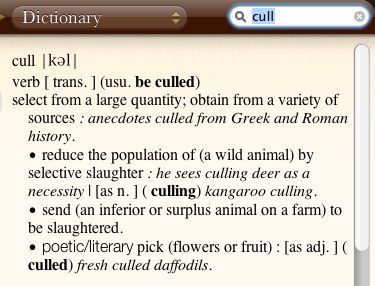Digital doesn’t translate into lower retention rates.

I’m mostly a street snapper so when I return to my computer and insert the memory card from the camera, I have learned not to be too quick to hit the Delete button.
Coming off the high of another street session, it’s easy to let poor judgement rule so I have found it’s best to wait a day or two befrore culling pictures.
Now culling, for the most part is, I believe, a good thing. Storage is no longer a valid reason to cull losers as disk space is impossibly inexpensive, but the time spent on not having to keyword all those images and the greater ease in cataloging and retrieval make keeping only the winners the rational thing to do. A great image which cannot be found for all the noise created by hundreds of losers has less chance of ever seeing the light of day, after all.
So I tend to cull aggressively and that practice got me thinking about what I call the Cull Ratio – the ratio of deletions to exposures.
In the days of film there really was little need to cull anything. For a start you kept your film strips as taken and tended to scan the best pictures to disc in any case, keeping the original film as a back-up. Further, volumes tended to be far lower in film days. Bytes are almost free, film and processing anything but.
The other day I happened to notice that I had just taken my 5,000th snap using the Panasonic G1 and that statistic got me thinking about how many of those I have kept, never having taken so many pictures in so short a time with any camera before. I had bought the Panny in early-July, 2009 so clearly I have been merrily banging away since then to hit 5k in a mere 6 months. In turn I wondered what my retention rate has been for earlier days and other gear.
Determining the Cull Ratio for my film days is easy. I simply add up the number of images I have scanned to disc and compare that to the number of rolls of processed film in storage.
For the digital era it’s even easier. As I have my digital cameras set to perpetually record exposures using incremental numbering, I only have to take a look at the number of the last frame taken to get the denominator, and take a quick peek in Lightroom – where all my images, film scans and digital – make their home. That gives me the numerator to determine Cull Ratio which is computed as (1-(Retentions/Exposures))*100%.
So here are my Cull Ratios:
Film – 8/1971-6/2007: 89%
Canon 5D – 2/2006 – 1/2010: 78%
Panasonic G1 – 7/2009-1/2010 : 80%
I confess to some surprise at the Cull Ratio results. Off the top of my head I would have guessed that my Cull Ratio would be far higher with digital than with film when, in fact, the exact opposite is true. I am retaining on average 21% of my digital images whereas with film the retention rate was closer to 11%. That’s almost twice as high a retention rate.
In the film days I know I was far more studied in my approach to pressing the button. Partly because I had little money for the back-end costs and partly because I never liked processing and the attendant unproductive time investment.
In digital days you might argue that I have become less selective, keeping almost twice as many images, but I do not think that is the case. Yes, cost is no longer a consideration but it is not a significant variable either for, were film to be the only choice today, cost would no longer trouble me, and I would simply delegate the processing to save time.
No, I really think that digital has made me a better photographer, based on my Cull Ratio, for the three reasons:
- Heretofore hopeless images – poorly exposed or lit – can often be saved with digital manipulation, made especially easy by Lightroom.
- I am more inclined to experiment and take snaps which would never have had a chance of coming out in film days yet which now I take with impugnity, frequently finding I have managed to ‘get away with it’.
- I think that my eye is better today than 30 years ago.
I’m not advocating any particular cull practice based on the above. Having thought I would write ‘you can never cull enough’ when first ruminating about Cull Ratios, objective data must rule supposition. So I have had to eat my words. And speaking of eating, here’s a recent digital image which would never have made the cut in film days – poorly exposed, poorly composed and awfully lit, it was saved by digital processing.

American grotesque. On upper Fillmore Street in San Francisco. G1, kit lens.